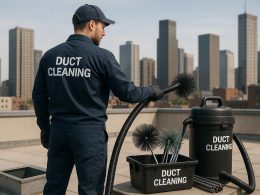Introduction
A healthy safety culture can influence how employees recognize hazards, speak up about near misses, and follow procedures. In Florida, employers that invest in clear policies, practical training, and worker engagement may see improvements in claims handling and incident trends, depending on circumstances. Outcomes vary by industry and workforce, yet credible guidance suggests that thoughtful safety practices may reduce injury frequency and limit cost drivers over time.
What Is a Safety Culture?
Safety culture is the shared values, beliefs, and practices a company holds regarding the health and safety of its employees. In a company with a strong safety culture, everyone—from top management to front-line workers—believes that safety is a top priority and behaves in a way that supports that belief.
It’s more than just wearing hard hats or posting warning signs. It’s about creating an environment where employees feel responsible for their own safety and that of their coworkers. They look out for hazards, report unsafe conditions, and take safety rules seriously.
The Link Between Safety Culture and Workers’ Compensation Costs
Workers’ compensation insurance pays for medical bills, lost wages, and rehabilitation when an employee gets injured on the job. The more claims a company has, the higher its insurance premiums will be.
When a workplace has a strong safety culture, it tends to have:
- Fewer injuries and accidents
- Less severe injuries when they do occur
- Faster return-to-work times
- Lower overall claim costs
- Fewer fraudulent claims
This translates into reduced insurance premiums, fewer disruptions, and a more stable work environment. In other words, safety culture isn’t just good for your people—it’s good for your bottom line.
Why Culture Shapes Cost Drivers
Safety culture is commonly described as shared values and behaviors that keep safety visible in daily decisions. The National Institute for Occupational Safety and Health describes a culture of safety as a continuous, organization-wide commitment that influences what workers do when competing goals exist.
OSHA’s recommended practices state that well-designed safety and health programs can prevent injuries, improve compliance, and reduce costs, including reductions in workers’ compensation premiums. OSHA’s business case summary also highlights research where inspected firms saw a 9.4 percent drop in injury claims and an average 26 percent savings on workers’ compensation costs over four years. These results depend on many factors, yet they illustrate how systematic efforts may influence claim trends.
Florida Rules and Incentives That Reflect Culture
Florida recognizes structured safety efforts in rate setting. Section 440.1025 of the Florida Statutes addresses workplace safety programs in rate-setting and lists core elements such as a written policy, safety rules, inspections, preventive maintenance, training, first aid, incident investigations, and recordkeeping. Employers that implement a qualifying program may apply to the Division of Workers’ Compensation for a Safety Program Premium Credit of up to 2 percent.
Florida also promotes drug-free workplace programs. Employers that meet the criteria in section 440.102 may be eligible for a 5 percent premium credit from their carrier. Many companies incorporate drug-free policies into broader culture initiatives that include training and incident response.
Program Elements That Support Lower Risk

Building momentum starts with clear expectations, visible leadership, and steady follow-through. When teams understand what to do and why it matters, safer habits take root across daily tasks. The following practices are commonly recommended to translate policy into workplace procedures and may contribute to lowering risk over time.
- Publish a concise safety policy that sets expectations, assigns responsibilities, and invites worker participation. Florida’s statute contemplates written policies and rules in qualified programs.
- Schedule inspections and document corrective actions. Pair inspections with preventive maintenance to address issues before they become injuries, as outlined in the statute.
- Deliver job-specific training and refreshers. OSHA recommends worker participation and training as core practices that can reduce injuries and related costs.
- Standardize first aid, incident reporting, and root-cause investigations, then update procedures based on findings. These elements appear in Florida’s program requirements and support learning after events.
- Coordinate return-to-work planning early. Structured transitional duties and communication with the carrier and clinicians can help shorten disability duration, a frequent cost driver, consistent with OSHA’s program model.
How Safety Culture Can Reduce Workers’ Comp Costs Fast
Let’s take a closer look at how a strong safety culture brings quick savings.
1. Fewer Accidents Happen
The most obvious benefit is that safety-focused workplaces experience fewer accidents. When people follow procedures, use equipment properly, and speak up about risks, dangerous incidents are less likely to occur.
Fewer accidents mean fewer claims, which leads to lower insurance costs.
2. Employees Return to Work Faster
In workplaces where safety is taken seriously, employees often recover and return to work faster after injuries. This happens because of better support systems and lighter-duty options that help workers stay engaged while healing.
Returning to work sooner cuts down on lost time costs and reduces long-term disability claims.
3. Increased Employee Awareness
Safety culture encourages every employee to stay aware of their surroundings. Workers report hazards, follow protocols, and avoid shortcuts that could lead to injury. This proactive approach helps stop small problems before they turn into costly accidents.
4. Better Reporting and Investigation
When safety is valued, accidents and near-misses are reported quickly and investigated properly. This leads to better solutions, more effective training, and fewer repeat incidents. The result is a safer workplace and fewer future claims.
5. Higher Morale and Retention
People want to work where they feel safe and valued. A strong safety culture boosts employee morale, which leads to lower turnover. Experienced employees tend to be more careful and make fewer mistakes, which also reduces accidents and claim costs.
Measuring Progress and Communicating Results
Tracking leading and lagging indicators helps connect culture with cost. Employers often review training completion, inspection closeout rates, and hazard reports alongside OSHA 300-series logs, medical-only claim counts, and days away metrics. Sharing results with supervisors and frontline teams keeps goals visible and encourages timely problem-solving. OSHA’s program guidance provides practical ideas for measurement and worker involvement.
Summary
Safety culture can influence workers’ compensation costs by lowering injury frequency, improving incident response, and supporting earlier return-to-work coordination. Comprehensive safety and health programs are associated with fewer injuries and meaningful savings, and Florida’s framework recognizes structured workplace safety programs with a potential premium credit under section 440.1025. Florida also notes that a compliant drug-free workplace program may qualify for a 5 percent premium credit.
Ready to take the next step? Consider reviewing OSHA’s recommended practices, drafting or updating your written policy, scheduling inspections and training, formalizing incident investigations, and building a return-to-work pathway. Then apply for any Florida premium credits your program may qualify for through the Division of Workers’ Compensation. Starting now may help your team reduce risk and support steadier workers’ compensation outcomes over time.
Note: This overview is for general information and training purposes. It does not create an attorney-client relationship and should not be relied on as legal advice. For guidance on a specific situation, consult a Florida-licensed attorney.












